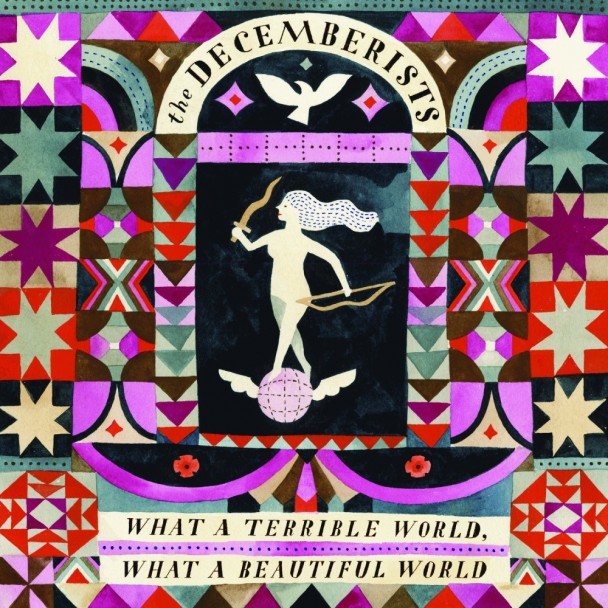
By: Max Blechman | The Duquesne Duke

The Decemberists, hailing from Portland, have often cited the folk-y college rock of R.E.M. as a major influence, and with The Decemberists release of What a Terrible World, What a Beautiful World on Tuesday, the two bands share an interesting late-career development: songwriting that feels lazy and lacking the vision of earlier work.
What a Terrible World, What a Beautiful World continues the move towards incorporating traditional folk and country music into the band’s sound that began in earnest on 2011’s The King is Dead. The new album features songs like “Carolina Low” and “Anti-Summersong,” which offer a country twang and unique instrumentation, to interesting effect. Meanwhile, the song “Mistral” feels like a secular southern gospel track. Musically, the album is the culmination of the integration of country, and one that could well be the blueprint for albums moving forward.
It is easy to see where this could be appropriately utilized; the band’s long narrative stories and references to literature could be as easily applied to this album as Willie Nelson applied the narrative of a murderer to Red Headed Stranger—country is very well suited to the task. The issue lays in the fact that What a Terrible World, What a Beautiful World does not have these sorts of narrative themes, despite songwriter and lead singer, Colin Meloy’s, obvious talent at crafting these narratives.
Gone are the days of references to David Foster Wallace or the fantasy themed rock opera of 2009’s The Hazards of Love. The Decemberists have always gone for an entirely maximalist, alternative and expansive sounding and containing nods to literature and folktales for bookish listeners. In the place of these references and the gleeful joy of nerd-pandering, Meloy good heartedly chastises fans, telling them on “Anti-Summersong,” “I’m not going on/ Just to sing another summer song/ So long, farewell/ Don’t everybody follow over themselves.” Self-reflection and references to “Axe shampoo” feel oddly lazy for a band that once had the recurring storylines of The Crane Wife.
Perhaps the parallels of The Decemberists and R.E.M. become clearest here. By the 15th year of being a band, R.E.M. had already begun to lose some of their steam, both artistically and personally. R.E.M.’s Automatic for The People felt like the last breath of a band whose work had transformed and culminated. Albums that followed, such as 1994’s Monster felt like a desperate effort to change lanes and begin anew the process of artistic growth, a process which would never culminate for the aging band.
Similarly, The Decemberists, now going on 15 years of the band’s existence, are shifting towards a desperate attempt to have a viable launch point for future albums. Personal songs and country influenced pop represent a transition that ought to signal the end of an era for the band that once reenacted, in concert, the same stories they wove into their songwriting.
What a Terrible World, What a Beautiful World is by no means a bad album, but it is certainly not the album that The Decemberists are capable of making. The country influence that could make for stronger backing for the once-intricate prose of Meloy instead feels like an alienating quality that the band feels the need to (and does lyrically) defend against their fans. The album can stand alone as a quality release, but in the context of the band’s larger body of work, fans can only feel somewhat let down.
Score: 6.5/10
